- It’s what we do – adventure motorbike riding tours magazine news events
- Dakar 2019: The Wish
- Yamaha Ténéré 700: First Aussie Ride!
- Under African Skies – australian adventure motorbike magazine
- Ducati Multistrada Enduro 1260
- Congregations (NSW and WA)
- Royal Enfield Himalayan – adventure motorbike magazine – australia
- Kimberley Dreaming
- Ural Adventure Ride = australian adventure motorbike magazine
- Bali Tour 2019 – Perth Adventure Riders
- Scott Britnell
- Window Shopping
- Fathers Day = australian adventure motorbike magazine
- Blue Banger Run = adventure motorbike riding
- KLRRR
- Best Job In The World
- Tubeless Bliss with Miles Davis
- Retyrement with Andy Strapz
- Food For Thought with Karen Ramsay
- Checkout
- Fit Out
Sharper than the Multistrada Enduro 1200? We have to say the Multistrada Enduro 1260 is not only sharper, it’s even more fun to ride.
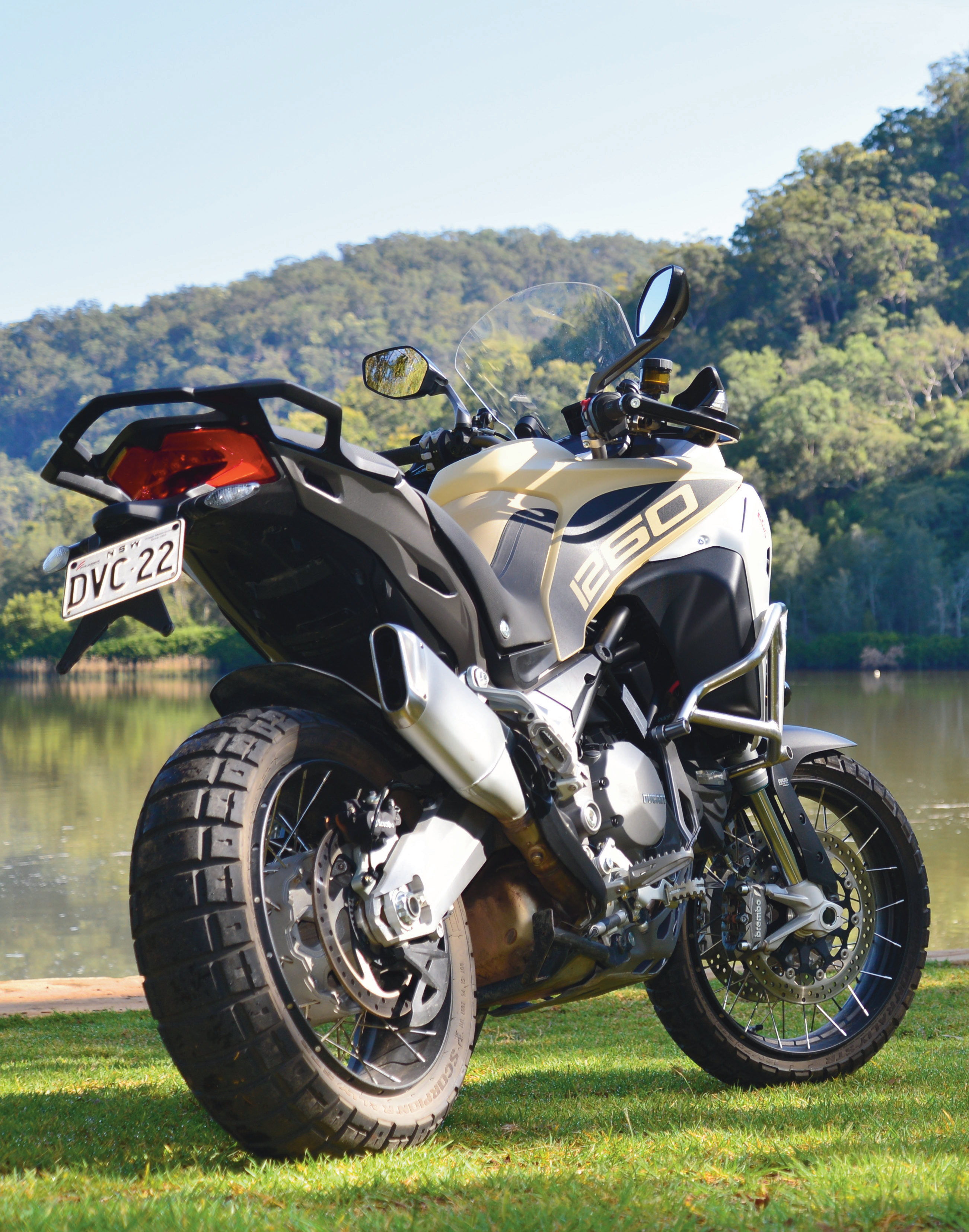

Multistrada Enduro 1260
Adventure Rider Magazine loved Ducati’s Multistrada Enduro 1200.
We raved about it, and with good reason. Aside from it being heavy to heave upright in a sand dune, it was a knockout joy to ride in almost every situation. It destroyed long distances, it powered past unsuspecting sports bikes on technical roads (we loved that bit) and it handled some surprisingly tough terrain.
But now the Enduro 1200 has faded into the past.
Now there’s the Enduro 1260, and we’re shaking our heads in disbelief, but we think it offers even more sparkling performance than the Enduro 1200.


Multistrada Enduro 1260
Ducati has hit a sweet spot with ride enjoyment on its current models.
New
We’re going to call this bike ‘the 1260’. Ducati has quite a few Multistrada 1260 models, and in this review, when we say ‘the 1260’ we’ll be referring solely to the Multistrada Enduro 1260, okay? We’re not going to write the whole model name every time.
The 1260 features a new 1262cc, 90-degree, liquid-cooled, V-twin donk with variable valve timing. Power output is a ’nad-pumping 155hp and there’s a grunt-monster 128Nm of torque.
Those figures are no surprise to fans of Ducati’s big Multis, but it felt as though the power was more manageable in the 1260 than we’d seen in previous Multistrada Enduros. That may be a false impression brought on by the bike’s excellent handling, because a lower seat, lower footpegs and 15mm less ground clearance combine with new geometry to “ A couple of times we went looking for a clean-jocks setting, but even Ducati hasn’t made that advance yet. ”have a very noticeable effect on the bike’s stability. Electronic ‘Skyhook Suspension EVO’ plays its part as well of course, and the result is Schwarzenegger muscle with a ballerina touch.
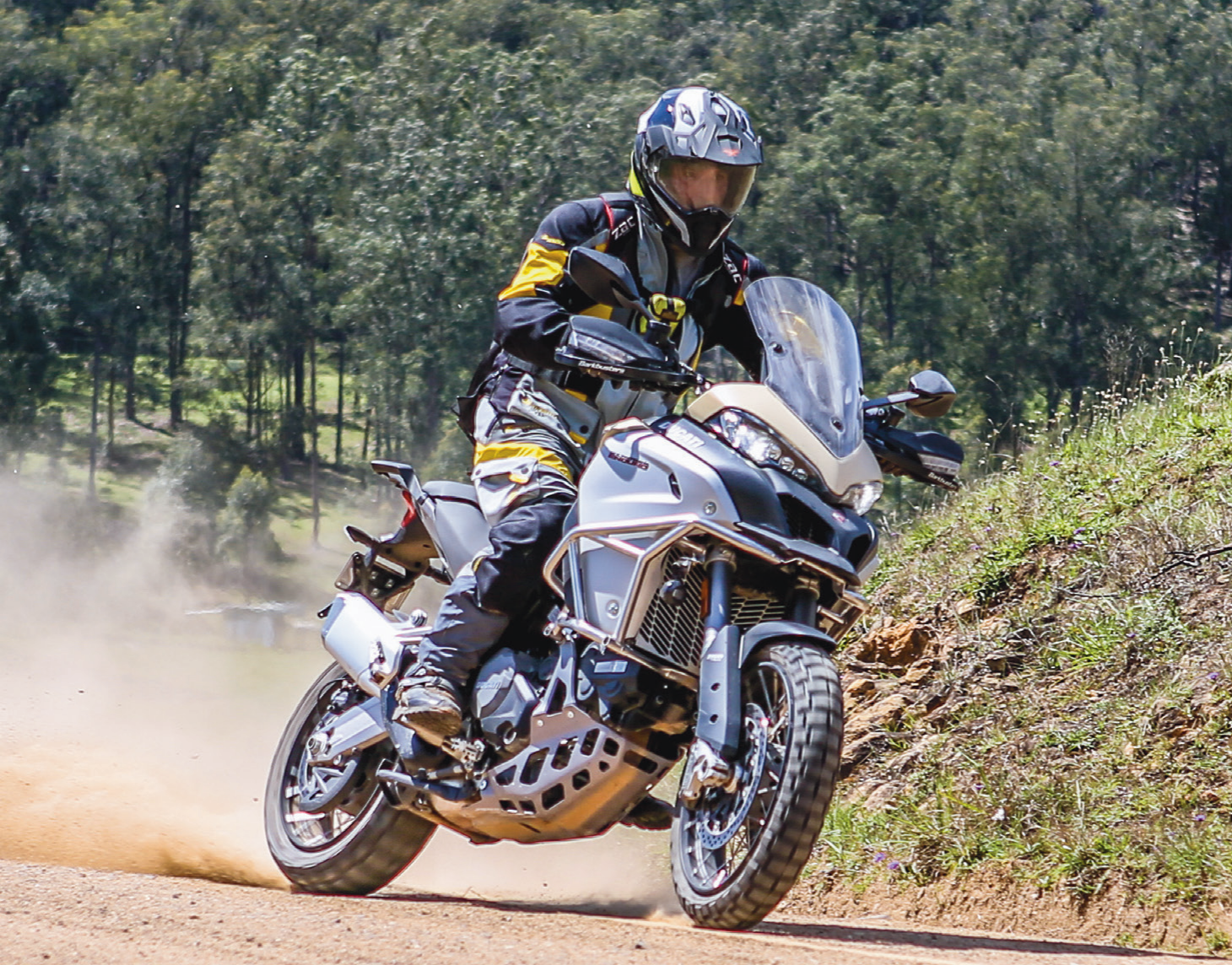

The same, but different
Ducati fans will feel right at home on the 1260. The shape of the seat, ’bars, tank and all the bits and pieces around the bike are very similar to the 1200 Enduro.
There’s the same four riding modes, changeable on the fly of course, and aside from the ease of getting the feet on the ground, it’d be easy to think there wasn’t a lot different from the 1200.
But where our regular 175cm rider was immediately comfortable on the 1260, our 195cm rider felt cramped and uncomfortable where he’d been relatively happy on the 1200. Of course, there’s a taller seat available that may well have suited him, but we didn’t have it with us during the test ride.
Another noticeable change is the 12.5cm TFT display.
We struggled a little with the menu on the 1200. There were so many possible settings it was bloody hard to know where to go to end up with what we wanted. It probably took us most of a year to settle in to what was on offer and work out how to select it. Once we’d learned that, though, having the bike in the right mode with the right settings meant stellar performance, so it was worth getting right.
The 1260 has the same incredible range of rider-adjustable parameters, but the presentation on the screen itself is now a lot easier to understand. Graphics showwhich component is being adjusted – so a pic of, for instance, a motor or suspen-sion – and highlights show which facet of the component is being changed. Then, instead of numbers which were open to interpretation – is ‘1’ the most or the least? – the selections come up with words describing the choice.
Even better for day-to-day riding, the screen in its ‘normal’ function shows a great deal of really useful information in a very compact, but clearly visible, display.
Once the rider selects the mode and variations, the display shows things like the traction control, ABS and wheely control in the bottom-right corner. We were surprised at how often we found ourselves checking those settings, usually after we’d pulled off an amazing powerslide or carved up some poor unsuspecting sod on a crotch rocket on the bitumen, just to see whether it was us or the bike that’d done that spectacular manoeuvre (it was always the bike).
A couple of times we went looking for a clean-jocks setting, but even Ducati hasn’t made that advance yet.
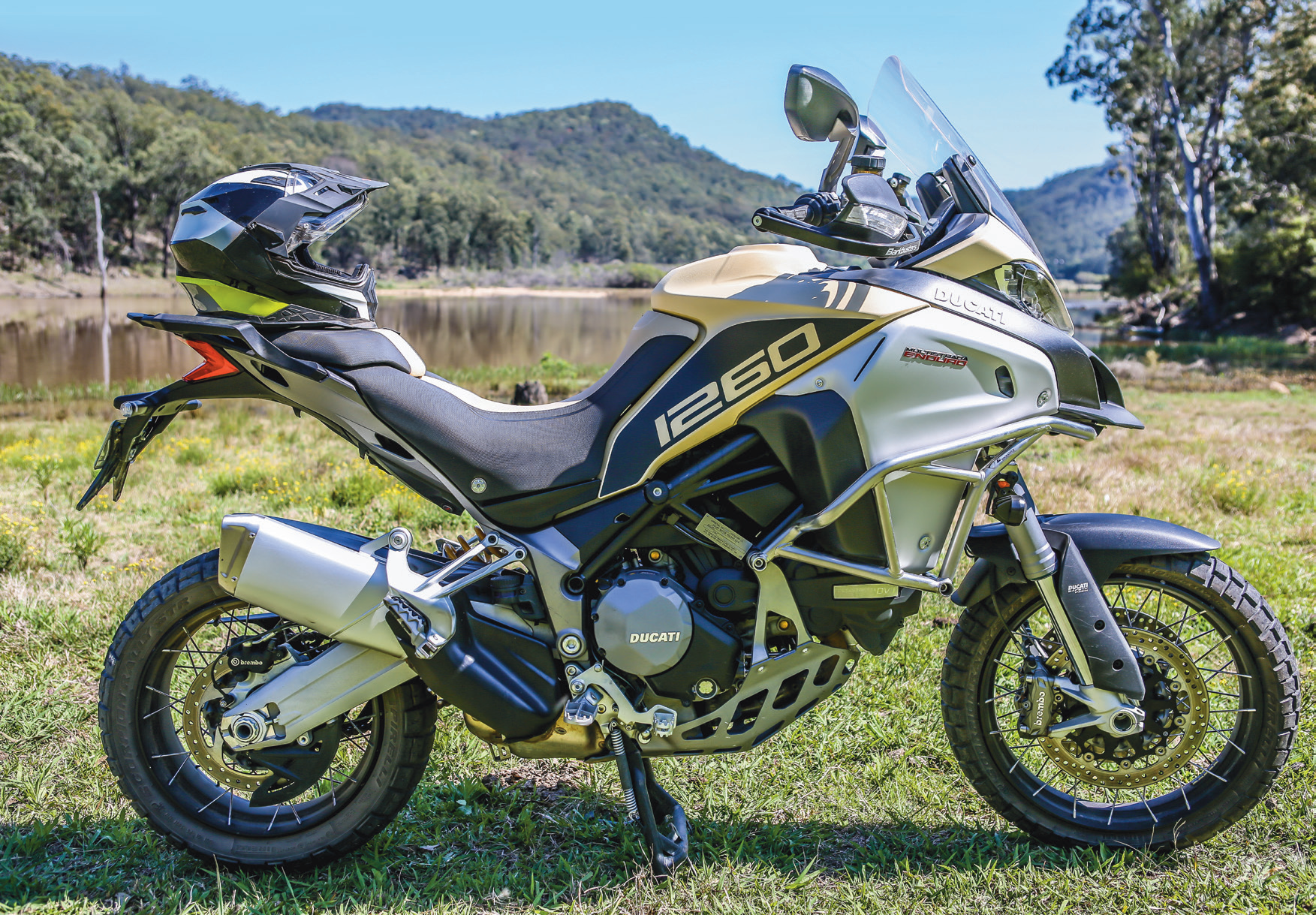

Incredible
There’s obviously a wealth of regular information on the TFT screen. Things like fuel, speed, tacho, trip meters, odometer, gear choice and the ‘usual’ readouts are all there.
The switches are backlit too, by the way, and we liked that a lot. It makes them really easy to see and use, day or night.
Braking?
We don’t know what to tell you. In our opinion both front and rear are superb, but performance will depend to some degree on selecting the right mode for the current terrain. We fooled around with Sport mode on the dirt just to see what would happen and there was all kinds of techno wrist slapping going on. Traction control went apeshit any time we tried to accelerate and the ABS went mental if we tried to stop. But flicking over to Enduro mode had the bike running at ICBM velocities and braking like a labor politician who’s seen a union secretary at a media conference.
It’s truly amazing how the electronics on the 1260 lifts the ability of a very average rider.
And as we said earlier, it seemed to us the stability and handling of the 1260 has taken a big step forward from the same characteristics as we remembered them on the 1200 Enduro.
It’s been a while since we rode the 1200 Enduro, but the impression is very strong. The 1260 just seems a lot more stable, to the point where we were encouraged to do some mildly crazy stuff. Once we started doing crazy stuff, and the bike made us feel good about it, there was no going back. The more we rode the 1260, the more we loved it. The power in Enduro mode came on in a controlled rush, braking was strong and the ABS still saved us a few times.
For covering distance, the low-down torque and cruise control made for wonderfully relaxed sightseeing.
In Sport on the road it was the same, but compared to off-road it was like watching a dash cam on fast forward.
Thank goodness for those closed roads on private property, eh?
Awesome.
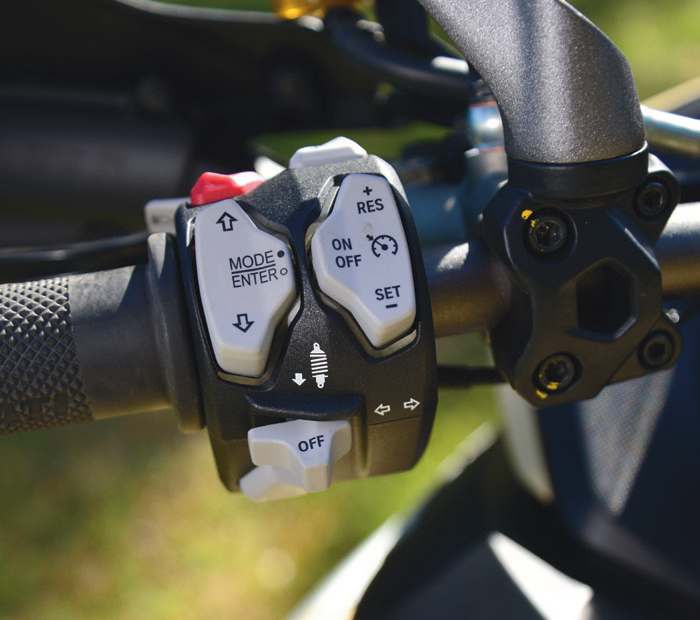

Multistrada Enduro 1260
Backlit switching. Nice.
A few things
As we thumbed through the comprehensive material supplied by Ducati there were a couple of interesting things about the 1260 that caught our attention.
One was 15,000km service intervals.
Another was valve-clearance checks at 30,000km intervals.
That’s impressive in a motor offering this level of performance.
We’re not convinced hands-free start up or quickshifters are a big deal on off-roaders, but the 1260 has both.
It also has keyless ignition, so if a dopey editor starts the bike and rides off, leaving the Ducati representative with the key fob, he can get waaaaay down the road, shut down the bike for photos, then spend the rest of the morning phoning everyone he knows to get someone to ask the Ducatisti to please bring the key fob to the photoshoot location so the bike would start.
Cruise control, ride-by-wire throttle, semi-active suspension and the beautiful finish and fittings expected from Ducati are all in evidence on the 1260 to a very high degree. There’s a good range of Ducati luggage, apparel and accessories available too, and we really can’t see any area the bike’s lacking.
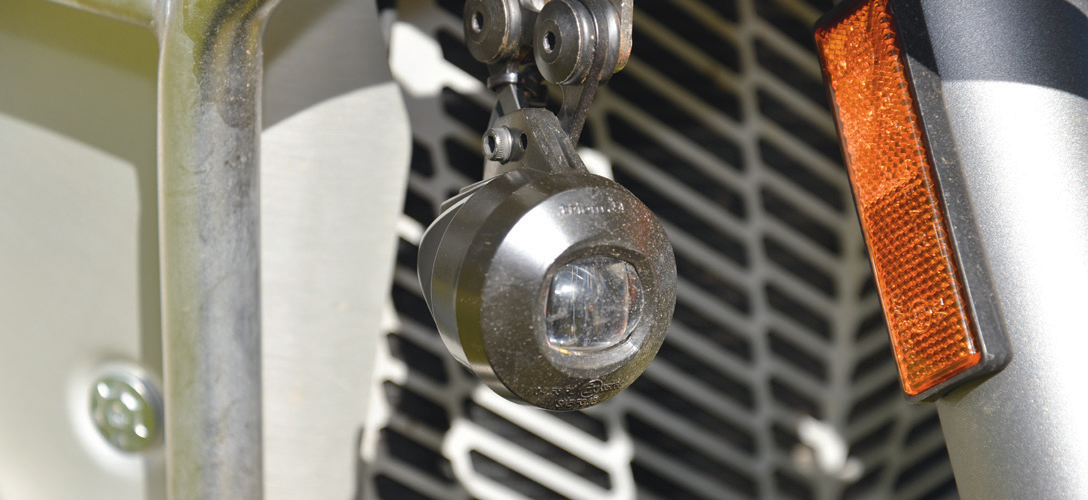

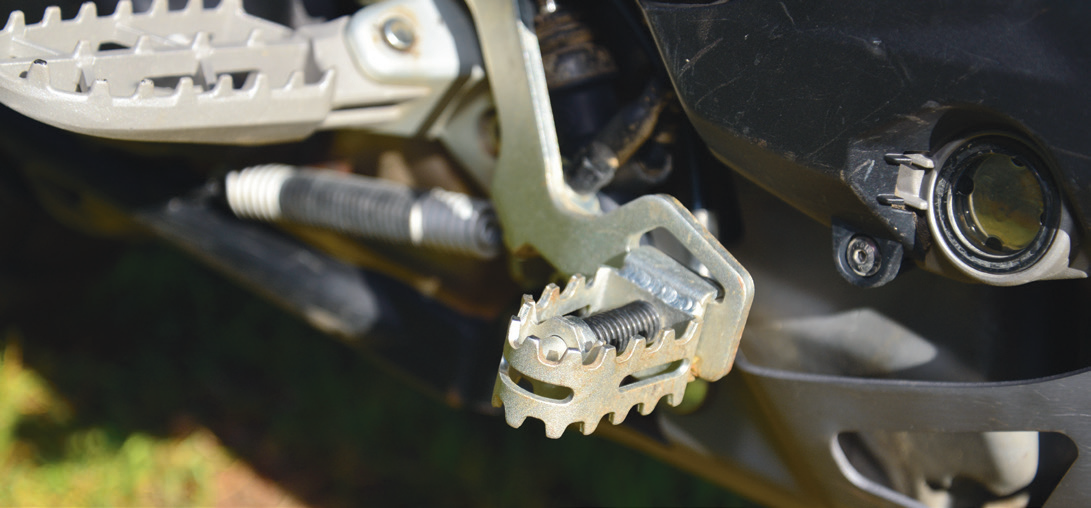

Suck it and see
This Ducati isn’t going to suit everyone.
Despite our being besotted with the handling and power delivery, and the unbelievably huge range of tuning parameters available to the rider, it’s still heavy. It doesn’t feel heavy while it’s moving, but in sand or when it needs to be heaved upright, that mass is going to tell.
Performance as incredible as that offered by the Multistrada Enduro 1260 isn’t available at bargain-budget prices.
As was pointed out during our time with the bike, our ear-to-ear grin every time we pulled up was an indicator of just how much we were enjoying the ride. It’s hard to think about dollars and cents when an experience of that magnitude is on offer.
And anyone considering an adventure bike in this class will be shopping in the same price range no matter which brand they look at.
Ducati has hit a sweet spot with ride enjoyment on its current models, and the Multistrada 1260 Enduro is probably smack dab in the sweetest, high-performance adventure-riding spot of all.
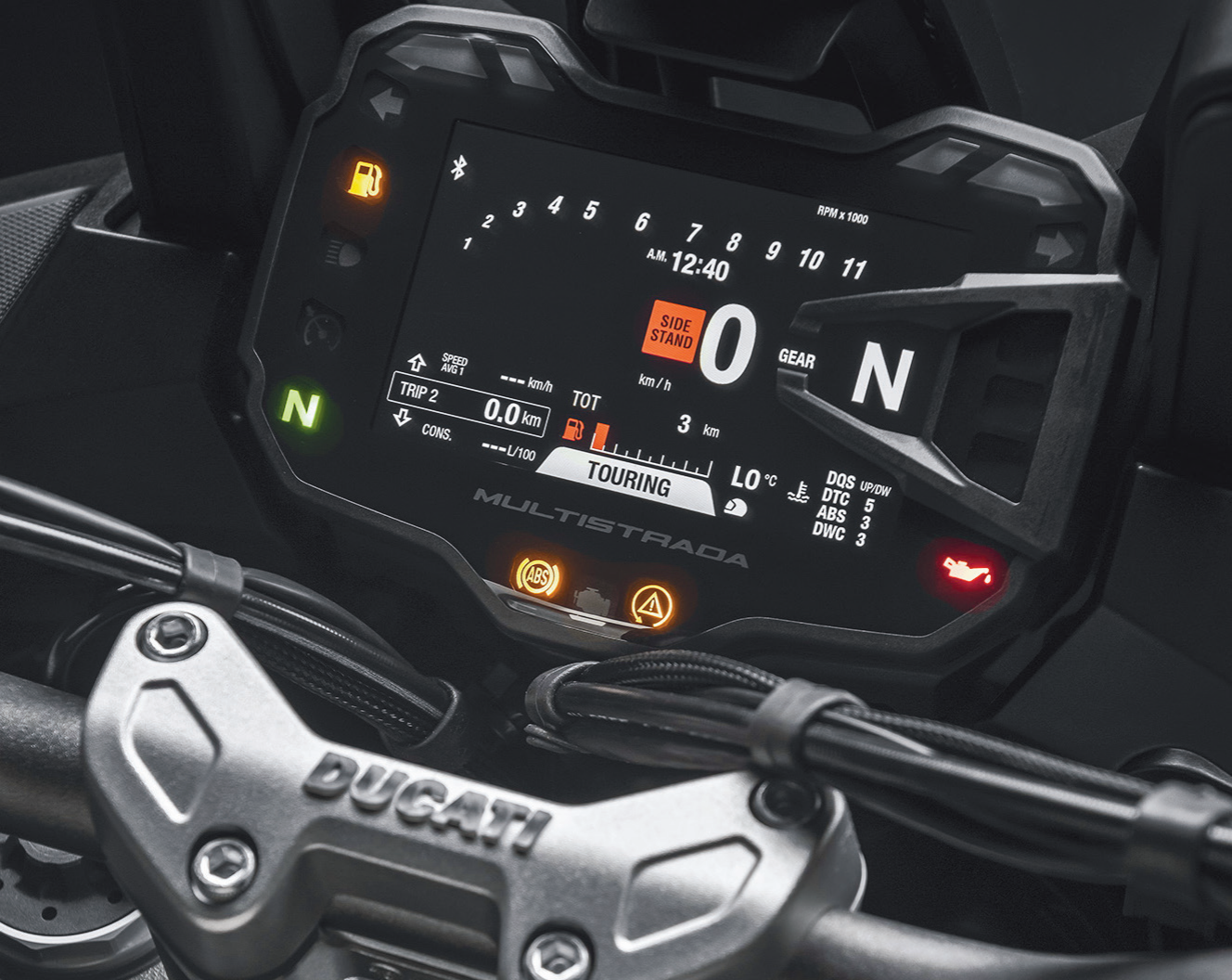

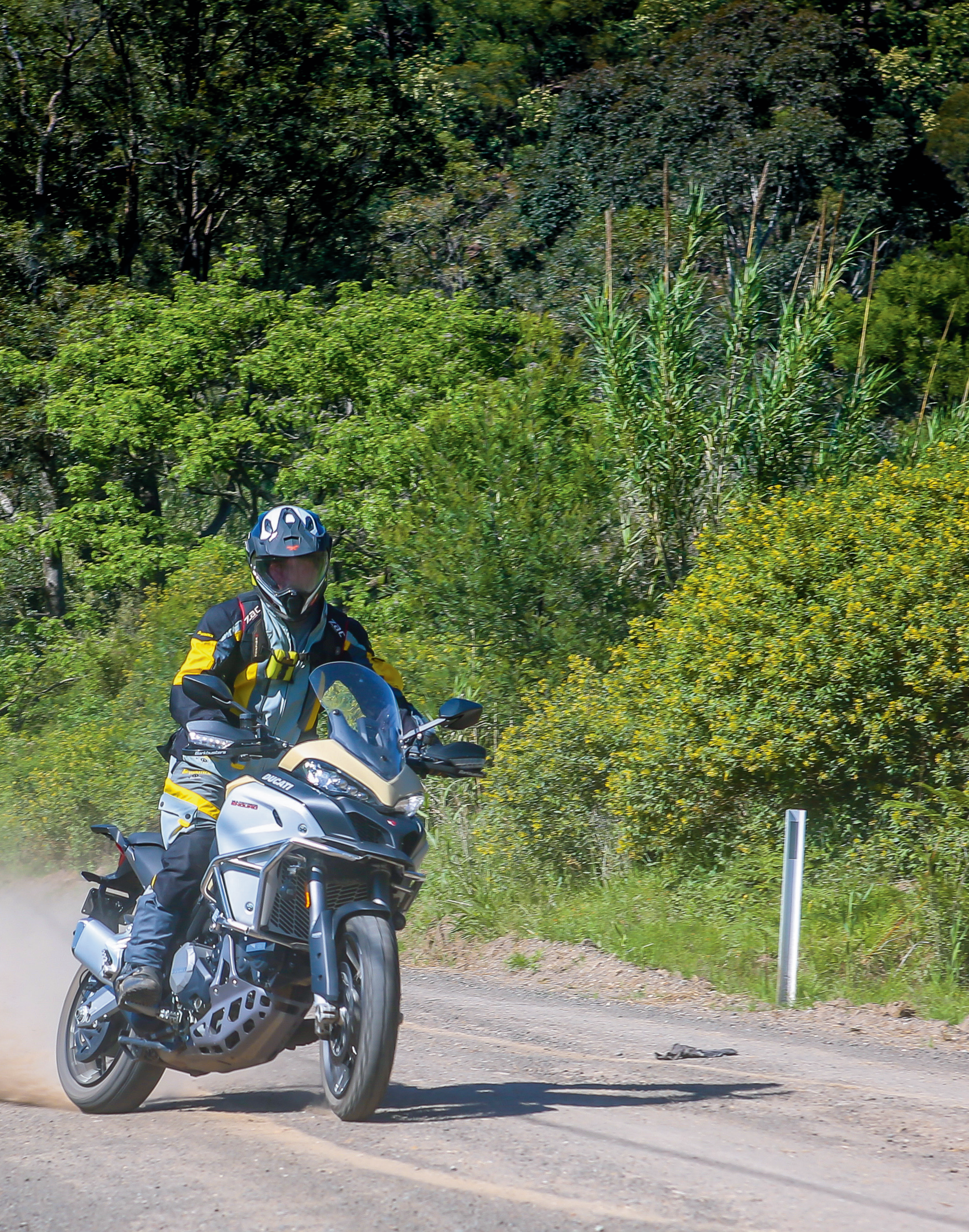

Ducati Multistrada Enduro 1260
Recommended retail (ride away): Red $31,990. Sand $32,190
Web: www.ducati.com.au


Engine: Ducati Testastretta DVT 1262, L-twin cylinder, four-valves per cylinder, dual-spark, liquid-cooled, Desmodromic
Variable Timing
Displacement: 1262cc
Power: 116kW (155hp) @ 9500rpm
Torque: 128Nm @ 7500rpm
Frame: Tubular steel trellis
Front suspension: 48mm fully adjustable upside-down forks, electronic compression and rebound damping adjustment with Ducati Skyhook Suspension EVO (DSS EVO)
Rear suspension: Fully adjustable monoshock, electronic compression, rebound damping and spring preload adjustment with Ducati Skyhook Suspension EVO (DSS EVO). Aluminium double-sided swingarm
Front brake: Two 320mm semi-floating discs, radially mounted Brembo monobloc four-piston callipers, radial master cylinder, Bosch Cornering ABS
Rear brake: 265mm disc, two-piston floating calliper, Bosch Cornering ABS
Front tyre: Pirelli Scorpion Trail 2 120/70 ZR19 (vehicle homologated also for Pirelli Scorpion Rally. Same measurements)
Seat height: 860mm. 880mm with high-seat accessory. 840mm with low-seat accessory
Emissions and consumption: Euro 4 standard. Consumption 5.5l/100km
Fuel capacity: 30 litres
Dry weight: 225kg
Wet weight: 254kg
Standard equipment: Riding modes, power modes, Ducati Safety Pack (Bosch cornering ABS and DTC), Ducati Wheelie Control (DWC), Ducati Cornering Lights, Vehicle Hold Control (VHC), Ducati Skyhook Suspension EVO (DSS EVO), Ducati Quick Shift (DQS) up/down, cruise control, hands-free, backlit handlebar switches, Ducati Mutlimedia System (DMS), colour TFT five-inch display, full LED headlamp, auto-off indicators.
Ready for: Tyre Pressure Monitoring System (TPMS) and anti-theft system.
For more reviews, check out https://advridermag.com.au/news/








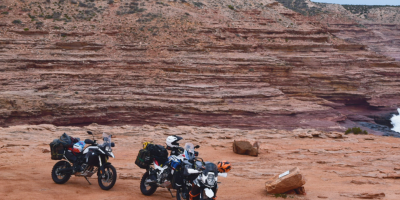






Comments